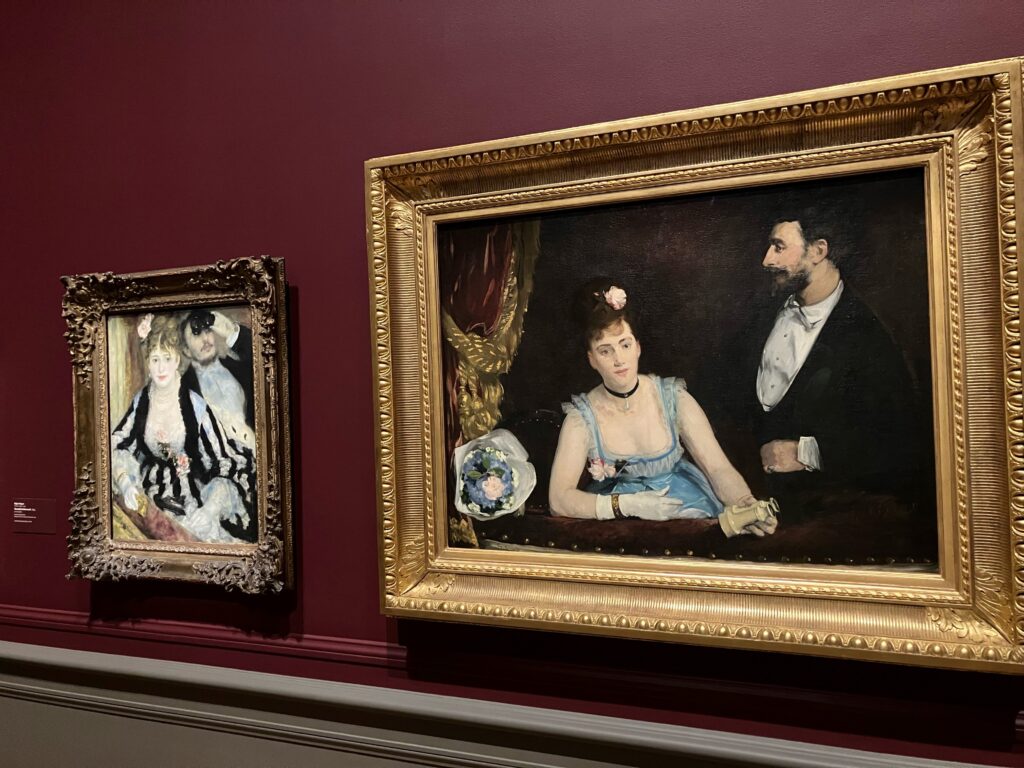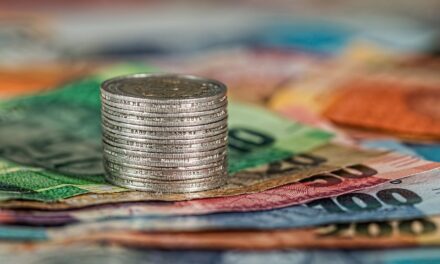We support our Publishers and Content Creators. You can view this story on their website by CLICKING HERE.
Museums and art galleries frequently use major anniversaries as an opportunity to launch exhibitions studying past events or artists. This fall, Washington’s National Gallery of Art has launched its own large-scale exhibit on the sesquicentennial of seminal events in modern art history.
“Paris 1874: The Impressionist Moment” compares and contrasts two exhibitions held in the French capital a century and a half ago. In doing so, it prompts viewers to contemplate the extent to which new art movements constitute a revolution, or an evolution, in thought and style.
Competing Paris Shows
This year’s exhibition, which the National Gallery is promoting with a series of concerts, lectures, and online and in-person discussions, displays works from two exhibitions held in Paris. In 1874, the Academie des Beaux-Arts held its regular Salon at the Palais de l’Industrie, while a group of independent artists formed a splinter group, the Societe Anonyme, and held a counter-exhibition.
In the short term, the establishment Salon had a far bigger effect. Approximately half a million visitors saw the works at the Salon exhibition, while the splinter group had fewer visitors (about 3,500) than the Salon had paintings (3,701). Yet the Societe Anonyme became known as the impressionists, giving that show long-run historical relevance. The National Gallery exhibit displays works from both the Salon and the Societe side-by-side, allowing visitors to reexamine trends in 19th century French art with modern eyes.
Contrast and Derision
The respective shows 150 years ago came at a turbulent time in French politics and society, with the country still recovering from its horrific defeat in the Franco-Prussian War. As soon as the war ended, Paris endured the upheaval of the revolutionary Commune in March 1871 and the bloody battles that put down the Commune two months later.
Three years after the war and the Commune, French society remained in turmoil, and the impressionists tried to capture that moment. As Jean Rousseau wrote in Le Figaro in May 1874, “We are tired of the conventions, of formulaic beauties, of style and cliched subjects. We want real truth, without attenuation or circumlocutions.” They rendered their subjects not necessarily looking for photographic accuracy but by trying to capture “the sensation produced by a landscape,” as one of them noted.
The exhibit’s first gallery sets up the contrast between the upstarts and the establishment. Viewers entering the exhibition see two works: “L’Eminence Grise” by Jean-Leon Gerome featured at the Salon, and Monet’s “Impression, Sunrise” was displayed by the Societe. In time, the Monet work gave impressionism its name; originally intended as an insult as part of a mocking review of their exhibition, the group adopted the sobriquet as their own.
Image CreditChristopher Jacobs
Sitting side by side, the two works demonstrate why Monet’s reviewer might have felt the new group’s work represented such a radical break as to deserve derision. Gerome’s work exquisitely captures the details of a group of courtiers, down to the folds in their elegant fabrics, while the Monet landscape shows shadowy figures masked in haze, with only an orange-red sun in the top third of the painting clearly delineated.
Common Bonds
Yet the break between the impressionists and the establishment didn’t always seem as strong as the contrast between Gerome and Monet. For starters, artists like J.M.W. Turner in Britain and the American James McNeill Whistler had explored atmospheric painting similar to that of the impressionists prior to the 1874 Paris shows.
Some of the works exhibited at the “establishment” Salon also would have felt at home at the impressionists’ show across town. Marie Bracquemond, described by the National Gallery as a “lesser-known member of the Impressionist group,” displayed with them after 1879, but her work “Marguerite” — on view in the Washington show — was accepted and featured in the Salon of 1874.
Relationships between artists made barriers between the two groups permeable. Edgar Degas tried to convince Jean-Jacques Henner to submit works to the impressionists’ show, but he decided to submit to the Salon instead. Likewise, a National Gallery interpretive display notes that while Edouard Manet “was the recognized leader of avant-garde art in the 1870s … he never exhibited with the Impressionists. Instead, he reserved his ambitions for the larger public and the critical exposure offered by the Salon.”
Revolution via Evolution
Placing works of the impressionists and the Salon in the same exhibition demonstrates the differences between the two styles and movements. In some cases, as in the contrast between Gerome and Monet in the first gallery, the contrasts prove striking. But later in the exhibition, the differences between Renoir’s “The Theater Box” (on the left in the below photo), exhibited by the impressionists, and Eva Gonzales’ “A Box at the Theatre des Italiens,” submitted to (but rejected from) the Salon, appear slight:

Image CreditChristopher Jacobs
Similarly, the gallery notes that Charles-François Daubigny’s massive landscape “The Fields in the Month of June” “could just as easily have been included” in the impressionists’ show rather than displayed, as it was, by the purportedly “staid” Salon.
The National Gallery calls the changes made by Monet, Pissarro, Cezanne, and other impressionists a “pivotal shift” from the types of paintings exhibited by the Salon — and so it was. But it also built on prior works that foresaw differences in palette and brushwork, and “establishment” contemporaries utilizing the same techniques. By providing the context of impressionism a century and a half ago, the National Gallery’s exhibit shows the revolution via evolution that defines many changes in style and art.
“Paris 1874: The Impressionist Moment” is on view at Washington’s National Gallery through Jan. 19. Admission is free, but capacity limits and high interest mean guests may encounter queues, particularly on afternoons and weekends.

 Conservative
Conservative  Search
Search Trending
Trending Current News
Current News 





